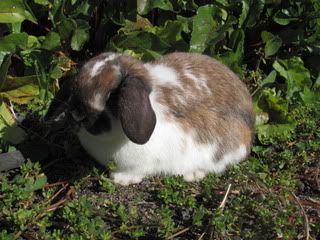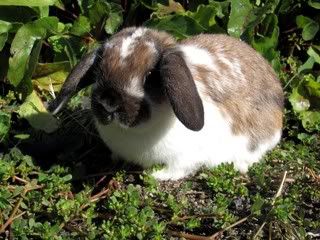Lenhart
Exploring the pasture
I recently purchased 2 rabbits for 4-H. I first bought my black rabbit, Jasper I am not sure on his age he may be 6 olds. He is a purebred black Holland lop. He has the tattoo, but I never got his pedigree. I got him in the first place to do 4-H with, but the first meetings are coming up and he still has a bit of work needed on him (He likes to nip, and has a bit of a temperament problem). Yesterday, I bought another purebred Holland lop, Glory born 6/16/10. She is a Broken Black Tort and also has the tattoo. The lady didn't have the pedigree, but may send it if she contacts the previous owner that has them. She is involved with 4-H, and a 4-H leader I believe.
My question would be; I was just curious if I were to breed the two of them what color combinations I would get, and if the kits would be showable. I have read a bit about the breeding process, and know the right age to breed, etc. So I am not clueless and wouldn't be irresponsible. I am just curious it doesn't mean that I will. I would wait until next year. The main reason I might is because I know a few people who would love to do 4-H with a rabbit.
Here is Jasper. This was taking about a month ago, he is a bit bigger now.


And here is Glory taken today. She is quite a bit smaller then Jasper.



My question would be; I was just curious if I were to breed the two of them what color combinations I would get, and if the kits would be showable. I have read a bit about the breeding process, and know the right age to breed, etc. So I am not clueless and wouldn't be irresponsible. I am just curious it doesn't mean that I will. I would wait until next year. The main reason I might is because I know a few people who would love to do 4-H with a rabbit.
Here is Jasper. This was taking about a month ago, he is a bit bigger now.


And here is Glory taken today. She is quite a bit smaller then Jasper.





